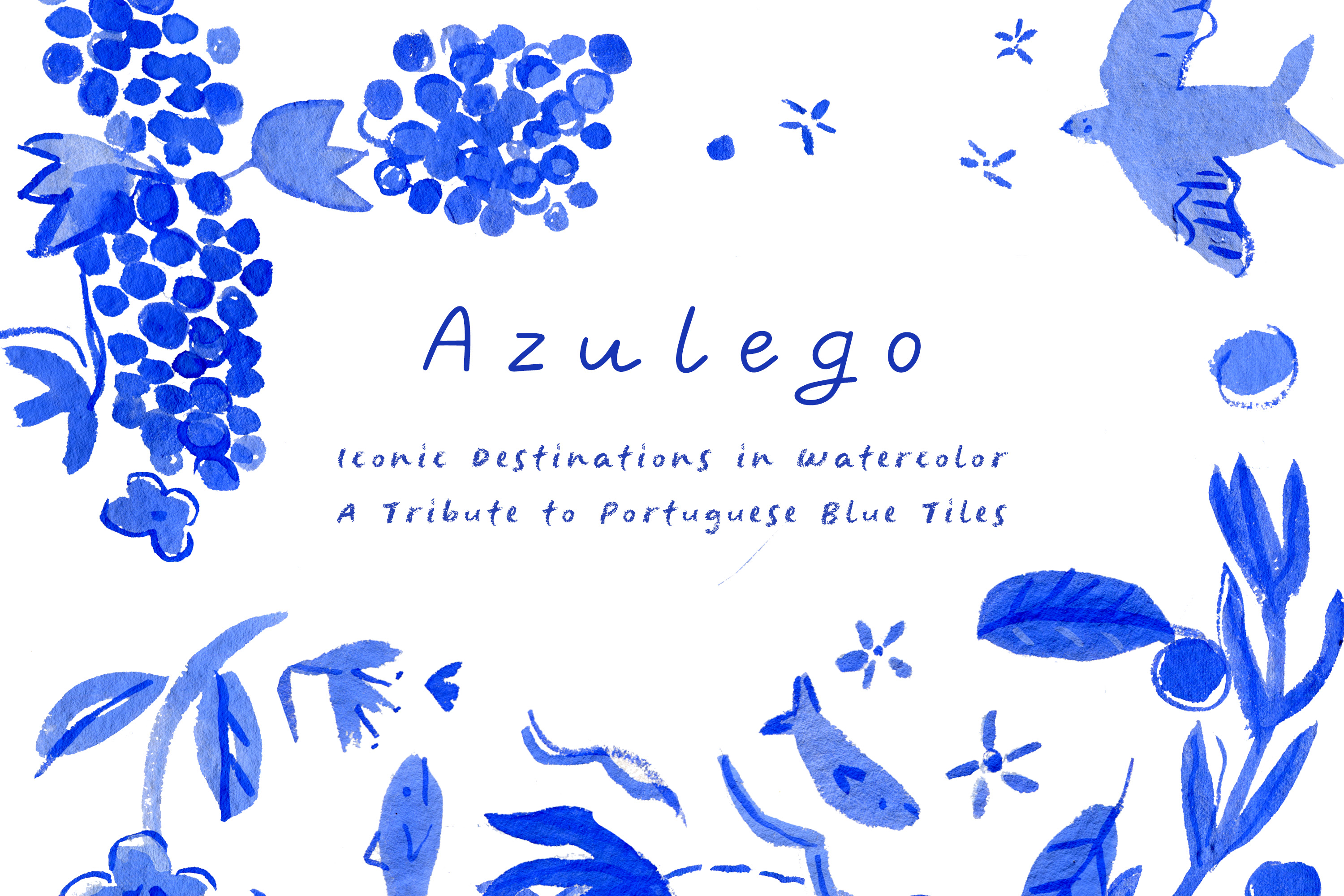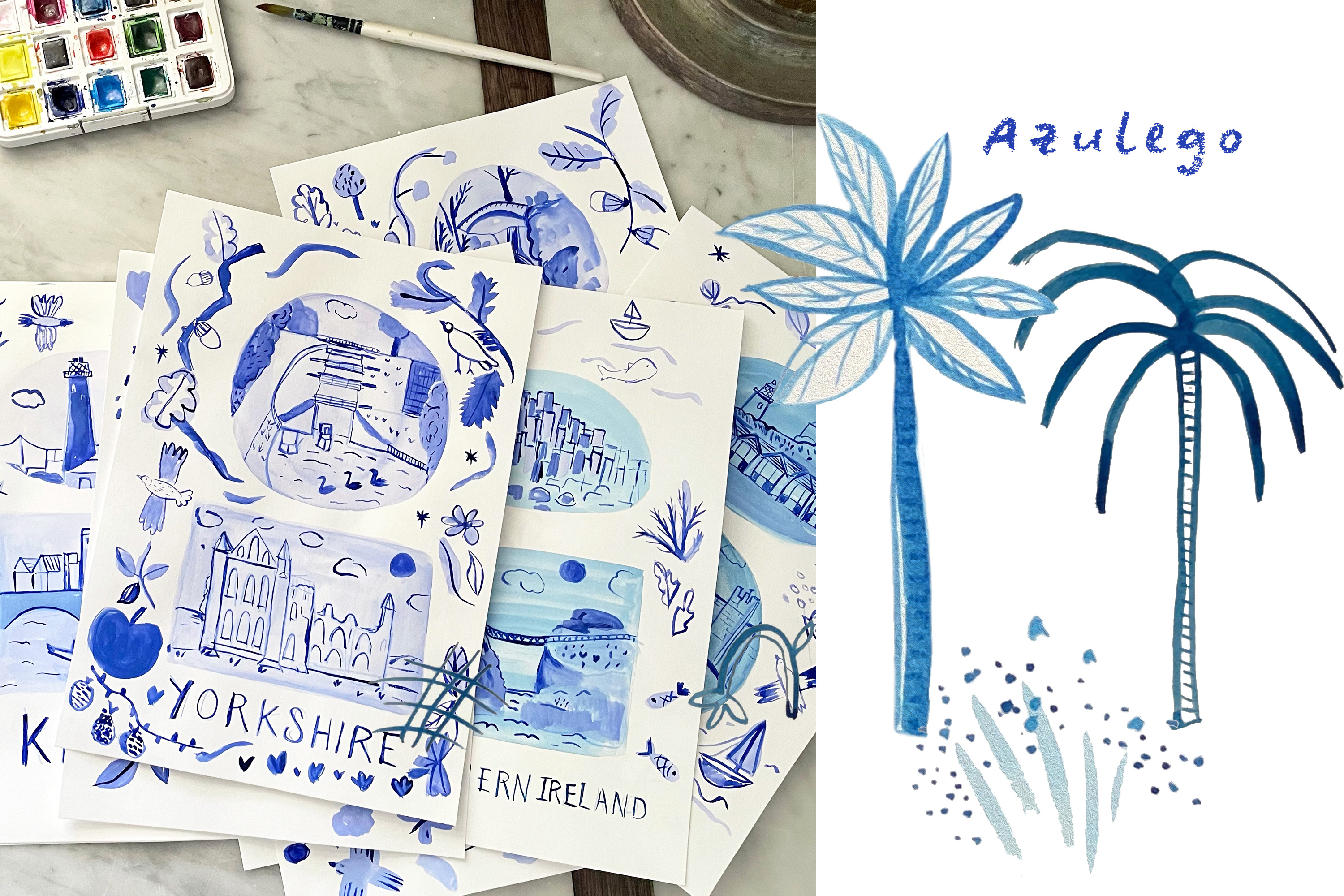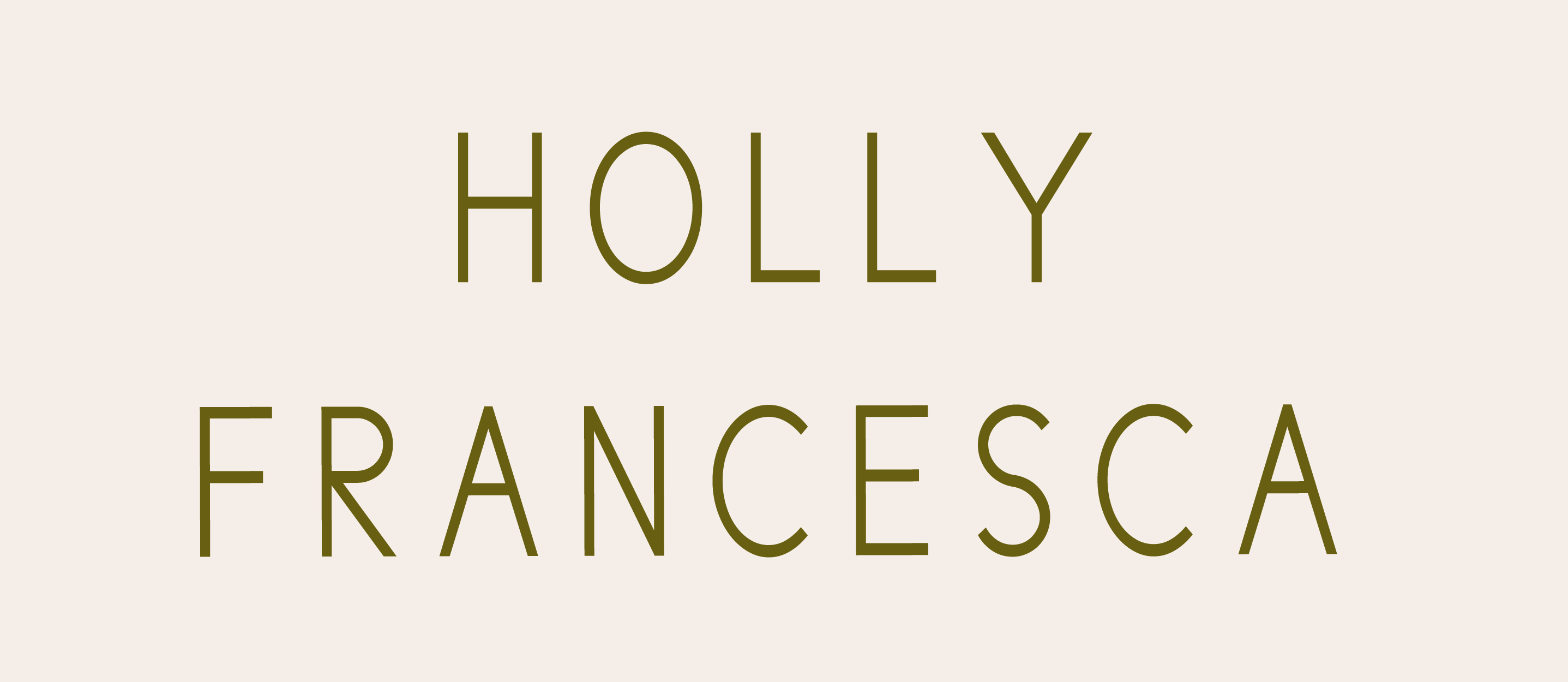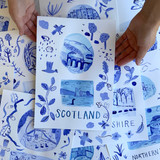
What a year it has been, a year ago we were packing up and selling our house (and everything we owned) in Hebden Bridge, Yorkshire, to move to the Western Algarve in Portugal. There's been many challenges and great times along the way, we've learnt so much and have also been so confused many times but long may the adventure continue. After renting all being well, we should be moving into our new home in Central Portugal at the end of September.

At this milestone, I wanted to take some of this Portuguese inspiration into my art. I wanted to link our current home in Portugal here with a UK range, containing many of the beautiful regions back home.
When we think of Portugal, a few things immediately come to mind: beaches, codfish, Port wine, Fado music, and... "azulejos," the traditional ceramic Portuguese tiles! I created some
Portuguese-influenced Blue Tile (Azulegos) designs for some of the English Counties, Scotland, Northern Ireland & Wales.
The blue tiles (azulejos) comes from Arabic and means “polished stone”. They entered the lives of the Portuguese in 1498, when King Manuel paid a visit to Seville in Spain and was so delighted by the shiny tiles around the city. He decided to bring this glowy art to Portugal and used it to decorate the walls of his castle: the Sintra National Palace.
After painting the scene with blue watercolour tones, I then move on to decorating the border with common finds from the area. Whether, it's items from the remarkable coastline of Northumberland or the wonderful countryside in Yorkshire.

But do you know why Portuguese tiles are usually white and blue?
Ever since Europe started its trading relationship with Asia, Europeans were fascinated with the elegance and fine touch of Chinese porcelain. (It was difficult to manufacture because it used an ingredient that didn’t exist in Europe at the time, becoming a luxury object of great rarity and a symbol of wealth for the locals). In the seventeenth century, in an attempt to copy it, the Dutch began making tiles in the same blue and white tones as Chinese porcelain. The tiles pleased the Portuguese so much that massive imports were ordered from the Netherlands to decorate the Portuguese buildings. Until later, Portugal setup their own manufacturing and used Master Painters to create their own style.
It was really interesting working with only one colour and having to think about my design with different tones. After painting the tile shapes, I filled these with my chosen landmarks from the area, before moving on to creating a decorative boarder of floral, fauna, animals and objects found in the nature there.
I hope you enjoy this new range, be sure to keep checking back in with us and follow our journey.

